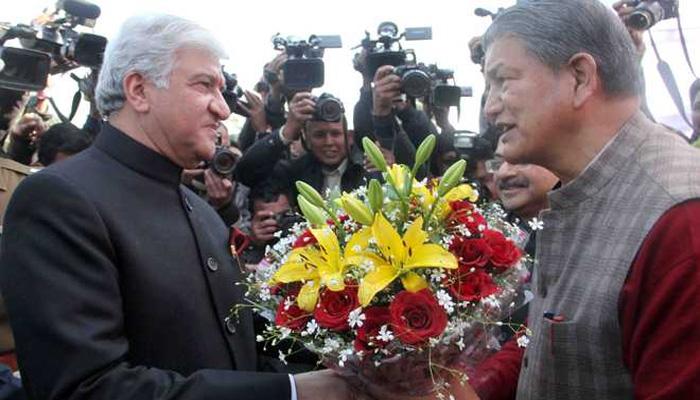Governors: More Political Than Constitutional?

One key debate in the Indian Constituent Assembly was on the appointment of governors. Many argued that a state’s High Court chief justice could fulfill the ornamental role when required. Equally fierce was the demand that a governor should be elected, not appointed. In a democratic polity, a head of the state should be a person who is directly returned by the people. This was the argument.
Prime Minister Jawaharlal Nehru intervened to state that an elected governor would become a parallel authority to the elected chief minister. This would hamper the normal functioning of the state. However, Nehru wanted the governor to be an eminent person, respected in his field, whether in academics, science or art. He did not favour a political appointee, a person whom the ruling party sought to give the office.
But he never imagined that even the constitutional head could be used by a political party to serve its ends. The bane was Article 356 which gave the Centre power to dismiss a government if there was a “breakdown” in the law and order machinery in a state. The normal procedure, however, was to wait for the governor’s report and then act.
Today, this practice is only on paper. Nehru’s dream was shattered by his daughter Indira Gandhi when she was the Congress president in 1959. She was against the Kerala government ruled by the Communists, for having passed an education bill brought out by the E.M.S. Namboodiripad government. He appealed to Nehru against the Congress protests which Indira Gandhi had initiated. Nehru must have spoken to his daughter about the agitation although the media did not say so.
Nehru publicly and privately told Namboodiripad that he was helpless. Since it was the decision by the Congress president, the Prime Minister had to obey because he was the party’s nominee. Subsequently, President’s rule was imposed and a democratically elected government was ousted. This became a precedent.
Over the years, the reluctance to dismiss an elected government has got diluted. The governor now, although a constitutional head, obeys the wishes of the party ruling at the centre. The only chief minister who put up any kind of resistance was Jyoti Basu in West Bengal and he could get away with it because one, he was too tall in politics and, two, he was too popular in the state where he could organize a revolt of sorts.
Now the stature of politicians has diminished so much that the ruling party at the centre gets away literally with murder. And this is undemocratic because the state has autonomy in a federal system we follow. But what can a state do when the centre is determined to have its own way?
Take, for instance, the case of Uttarakhand ruled by the Congress. Nine MLAs defected reducing the Congress Party to a minority. As laid down by the Supreme Court in the S.R. Bommai case, a date was fixed for the government to prove its majority on the floor of the house. Apparently, the Narendra Modi government at the Centre was not sure whether the defected members would stay out or rejoin the party.
So, 24 hours before the floor-test was to be conducted, the government was dismissed but the assembly was not dissolved. Obviously, the BJP thought that it could form the government with the help of the defectors. Then the Congress government went to the High Court and got a verdict in its favour as the floor test was ordered.
The lesson to be learnt from the entire episode is that the office of governor has got mixed with politics. He is no more an independent entity and follows what the centre tells him to do. As Home Minister Gobind Vallabh Pant once put it, the governor is a civil servant and has to act upon what the Centre tells him because he is New Delhi’s appointee. In fact, there are several instances in the past where a governor is not able to complete his tenure because a new government at the centre wants its own trusted loyalists.
Nehru’s emphasis in the Constituent Assembly that a governor should be a person of eminence is now a pipedream. A political party wants a trustworthy person in states, particularly where it is not ruling, and it makes no secret about it by crowding out the serving governor. The Congress Party, which had laid down high norms during the time of Nehru, is as guiltier as the other parties are.
Probably, it is difficult to force a ruling party to appoint a non-political, independent person to the office of governor. Therefore, the country should seriously consider abolishing Article 356 which is undemocratic since a democratically-elected government in a state should only be dismissed by the people who have returned it.
Even otherwise, in a federal system like the one we have the states enjoy independence in their own sphere. The constitution framers could have opted for a presidential form of government if they did not want to give autonomy to the states. Instead, they preferred a parliamentary system which allows interplay of different political parties and states. When a party loses majority in the lower house at any time, it has no option except to quit.
A new election is too expensive and too cumbersome. How many times can fresh polls be held? Had there been a constitutional provision for a plebiscite, the lacuna found could have been overcome. When Justice Hidayatullah was Vice-President and chairman of the Rajya Sabha, he complained that the constitution framers have not provided any method to associate the people’s wishes on an amendment to the constitution.
He, in fact, suggested a plebiscite. But this was turned down by the political parties. So the nation was back to square one. And there it stands even today.
(Photograph: Uttarakhand Governor KK Paul and Chief Minister Harish Rawat)



